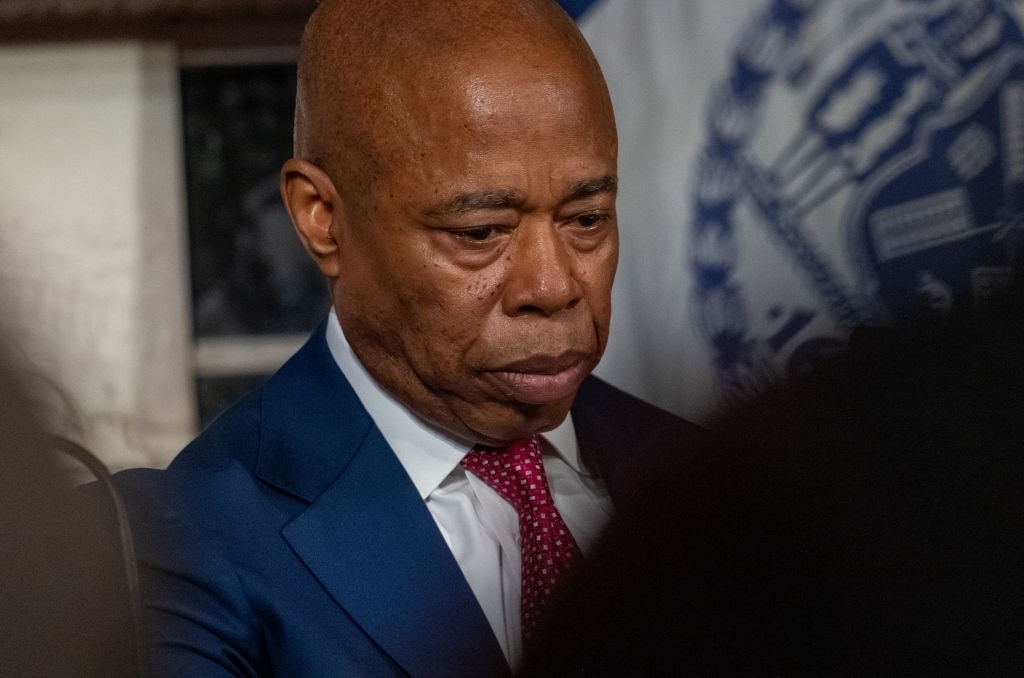Start spreadin’ the news: New York City has the nation’s worst municipal finances. There has been a lot of focus on the federal government’s abysmal fiscal health, be it the $34.3 trillion national debt or the perpetual annual trillion-dollar budget deficits. But what about state and local governments? A new report combed through the books and found that the Big Apple’s ledger is rotten to the core.
Fiscal Headaches for New York City
For the seventh consecutive year, New York City topped the list of worst municipal finances in the US, according to Truth in Accounting’s “2024 Financial State of the Cities.” Study authors found that the city’s financial condition deteriorated over the past year by roughly $6.1 billion, earning an “F” grade. What’s more, the per-taxpayer burden is nearly $62,000.
 So, what’s to blame? The report alluded to the long-term impact of the coronavirus pandemic that ravaged the city, with researchers writing: “Despite receiving $6.5 billion in COVID relief grants and a $1.3 billion increase in tax revenues, the city’s money needed to pay bills increased by $6.1 billion. Its unfunded pension liability increased due to unrealized losses of more than 8%, but New York City’s financial problems stem mostly from unfunded retiree healthcare obligations.”
So, what’s to blame? The report alluded to the long-term impact of the coronavirus pandemic that ravaged the city, with researchers writing: “Despite receiving $6.5 billion in COVID relief grants and a $1.3 billion increase in tax revenues, the city’s money needed to pay bills increased by $6.1 billion. Its unfunded pension liability increased due to unrealized losses of more than 8%, but New York City’s financial problems stem mostly from unfunded retiree healthcare obligations.”
The annual survey confirmed that 71% of the 75 largest US municipalities did not possess enough funds to cover their outstanding bills. The group noted that “elected officials have not included the actual costs of the government in their budget calculations and have pushed costs onto future taxpayers.” The other cities to round out the bottom five:
- Chicago, Illinois (negative $42,900)
- Honolulu, Hawaii (negative $24,200)
- Philadelphia, Pennsylvania (negative $20,400)
- Portland, Oregon (negative $20,100)
So, what were the “top five sunshine cities” that achieved taxpayer surpluses? Here is a breakdown:
- Washington, DC ($10,700)
- Irvine, California ($6,100)
- Plano, Texas ($5,100)
- Lincoln, Nebraska ($3,100)
- Oklahoma City, Oklahoma ($2,900)
Public Pension Crisis
The United States is experiencing a quiet crisis that does not receive much attention. Across the country, various states and cities have witnessed dramatic increases in unfunded pension liabilities. As the report noted, New York City, for instance, possesses fewer than six cents for every dollar of promised retiree health care benefits. In addition, the city’s pension pot has faced a series of headwinds, from poor management to ESG obsessions to lawsuits.
Unfortunately for retirees or those on the cusp of retirement, these trends are seen nationwide. New Jersey has one of the worst-backed public pension funds in the US. It covers more than 800,000 current and retired government workers. The program has been vulnerable due to politicians overpromising and underfunding. Additionally, more state workers are retiring, adding to the scheme’s fiscal woes. The good news is that the state has plugged some gaping holes by generating additional revenues from dedicated lottery contributions and the financial markets touching record territory.
The Pew Center on States projects that the 50 states collectively face a $600 billion pension gap. However, the Brookings Institution says this is a conservative estimate due to not including pension shortfalls at city and county levels and depending on “deficient rules for pension accounting.”
This past summer, Rand Corporation experts published an in-depth report that detailed the “causes and consequences of the crises in state and local pension funding.” Authors estimated that the typical public pension plan “cannot cover a quarter of its obligations to provide pension benefits to current, retired, and former employees, and 17 systems are unable to cover more than half of their obligations.” They identified the six primary contributors to the challenges gripping these funds: poor governance, a lack of expertise, conflicting incentives and interests, incorrect actuarial assumptions, toxic political environments, and institutional constraints.
A Dying City?
Will New York City metastasize into the dystopian wastelands observed in films like Soylent Green or Escape From New York? Unlikely. But America’s financial capital is coming face-to-face with reality, whether mounting debt levels or elevated crime emanating from progressive lawmaking. As every other nation, state/province, or city has experienced in the past, all bills eventually come due. It is Accounting 101.




